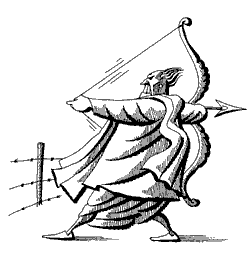 "The Congress has degenerated into warring groups so much so that the name conveys no sense unless it is referred to as Congress of so and so. Americans are fishing fast in these troubled waters and they are troubling the waters more to do more fishing. Their idea is to recondition the landlocked territory of Nepal into a streamlined military outpost and airbase against the People's Republic of China. Public opinion is extremely resentful of giving priority to military rehabilitation than to the amelioration of the wretched conditions of the people. Politically, the people are veering round to two parallel centres. In between these two powerful formations, Congress is being squeezed out, having lost all its prestige by internecine quarrel."
"The Congress has degenerated into warring groups so much so that the name conveys no sense unless it is referred to as Congress of so and so. Americans are fishing fast in these troubled waters and they are troubling the waters more to do more fishing. Their idea is to recondition the landlocked territory of Nepal into a streamlined military outpost and airbase against the People's Republic of China. Public opinion is extremely resentful of giving priority to military rehabilitation than to the amelioration of the wretched conditions of the people. Politically, the people are veering round to two parallel centres. In between these two powerful formations, Congress is being squeezed out, having lost all its prestige by internecine quarrel."
The two parallel centres the foregoing paragraph refers to are not the Maoist left and the reactionary right. They were the banned Gurkha Dal and the United Front of communists, socialists and other progressives closing in on the political centre half a century ago. If this excerpt from a 16 May, 1953 piece by Bombay-based Blitz weekly's staff correspondent sounds like some of the editorials appearing in today's Indian press, it's probably because we've come full circle.
Not that we weren't warned about the shape of things to come. "The Cold War ended more than ten years ago, but we may be seeing the recurrence of a new Cold War in our region," then-foreign minister Chakra Bastola cautioned us last year (Nepali Times, 4-10 May 2001, #42). Many of us dismissed his words as the work of a zealous ex-ambassador trying to reinvent a portfolio few elected politicians seemed to covet. Although Bastola was speaking about the possibility of the pre-9/11 US-China tensions spilling over into South Asia, he might as well have been predicting the collision of the interests of the world's two largest democracies.
Embodied in India's economic liberalisation policies in the 1990s was a strategic decision to move closer to the United States. Trade, access to American weapons systems and the creation of a strong alliance to counter China were part of the Indian aspirations. The Americans didn't necessarily weigh things the same way. When the Bharatiya Janata Party wrested power from the Congress in the mid-1990s, some US newspaper columnists decried the rise of "fascism" in the guise of Hindutva. As Pakistan's stock as a strategic ally of the United States seemed to plummet, India saw a window of opportunity. It began lobbying the White House and Capitol Hill through Corporate America and the Israelis. It worked. The anti-BJP tirade on US editorial pages gave way to tributes to the emergence of a promising partnership. But there was a caveat. President Bill Clinton wasn't about to unfreeze the dozens of F-16s Pakistan had paid for. However, he didn't mind spending six hours in the world's newest nuclear-armed state, under a fresh spell of military rule, during his South Asian tour in 2000. By the evening of 11 September, 2001, Islamabad was back on Washington's strategic map, heightening anxiety levels in New Delhi.
Some Indian security analysts detect in Nepal's Maoist insurgency a rare opportunity to foster cooperation with the United States without Pakistan coming in the picture. Others are alarmed by the impending relegation of India to junior-partner status in its own backyard. With the SAARC quintet-Bangladesh, Bhutan, Nepal, Maldives and Sri Lanka-having expressed varying degrees of interest in forging a new partnership with the United States, India's "look west" policy has evidently entered the monitoring-and-evaluation phase.
Where does all this leave Nepal? "Inevitably, [Nepal] will become of greater and greater importance if we persist in our present policy of lessening British influence in India," Perceval Landon wrote in his two-part 1928 tome on the kingdom. "It is not impossible that Nepal may even be called to control the destiny of India." (Nepal, Volume II, p. 363) Many of us thought Nepal had already played its part two decades later when Maharaja Mohan Sumshere, responding to Prime Minister Jawahar Lal Nehru's request, despatched Nepali soldiers for garrison duty in India as part of Delhi's effort to persuade recalcitrant princely states to accede to the union. In fact, Nepali soldiers found themselves engaged in direct action in Hyderabad, which would culminate in the state's agreement to join the Indian union.
(Whether this fragment from Nepali history would do anything to mollify Indians miffed by Jang Bahadur's role in putting down the mutiny and by Nepali soldiers' fierce sense of loyalty to the empire at Jallianwallah Bagh remains outside the purview of this piece.)
As India assesses the future of its relations with the United States amid the rehabilitation of Pakistan in international corridors of power, Landon's prognosis has acquired new purport for Nepalis. It looks like Lashkar-e-Toiba and Jaish-e-Mohammad figured that out before most of us did.


